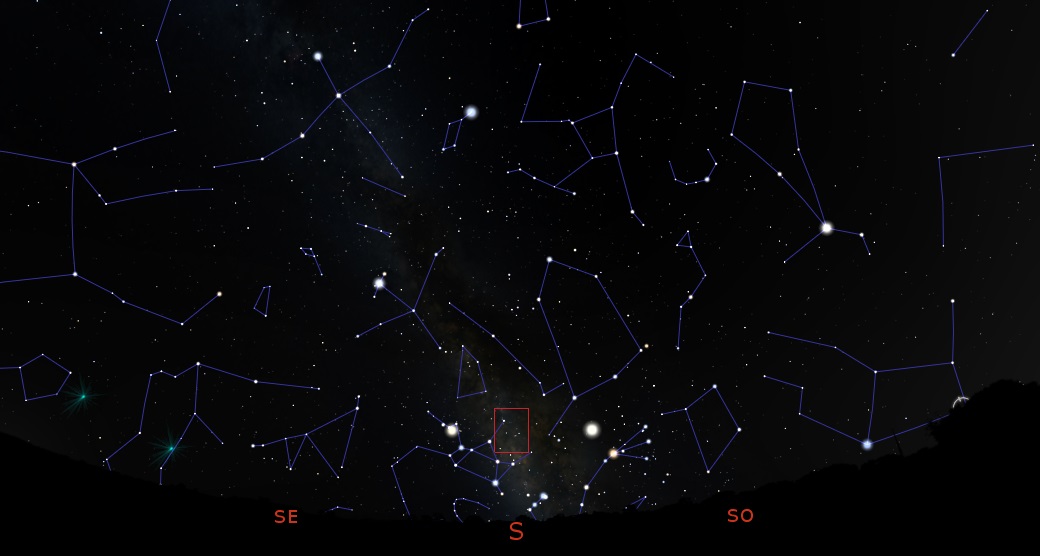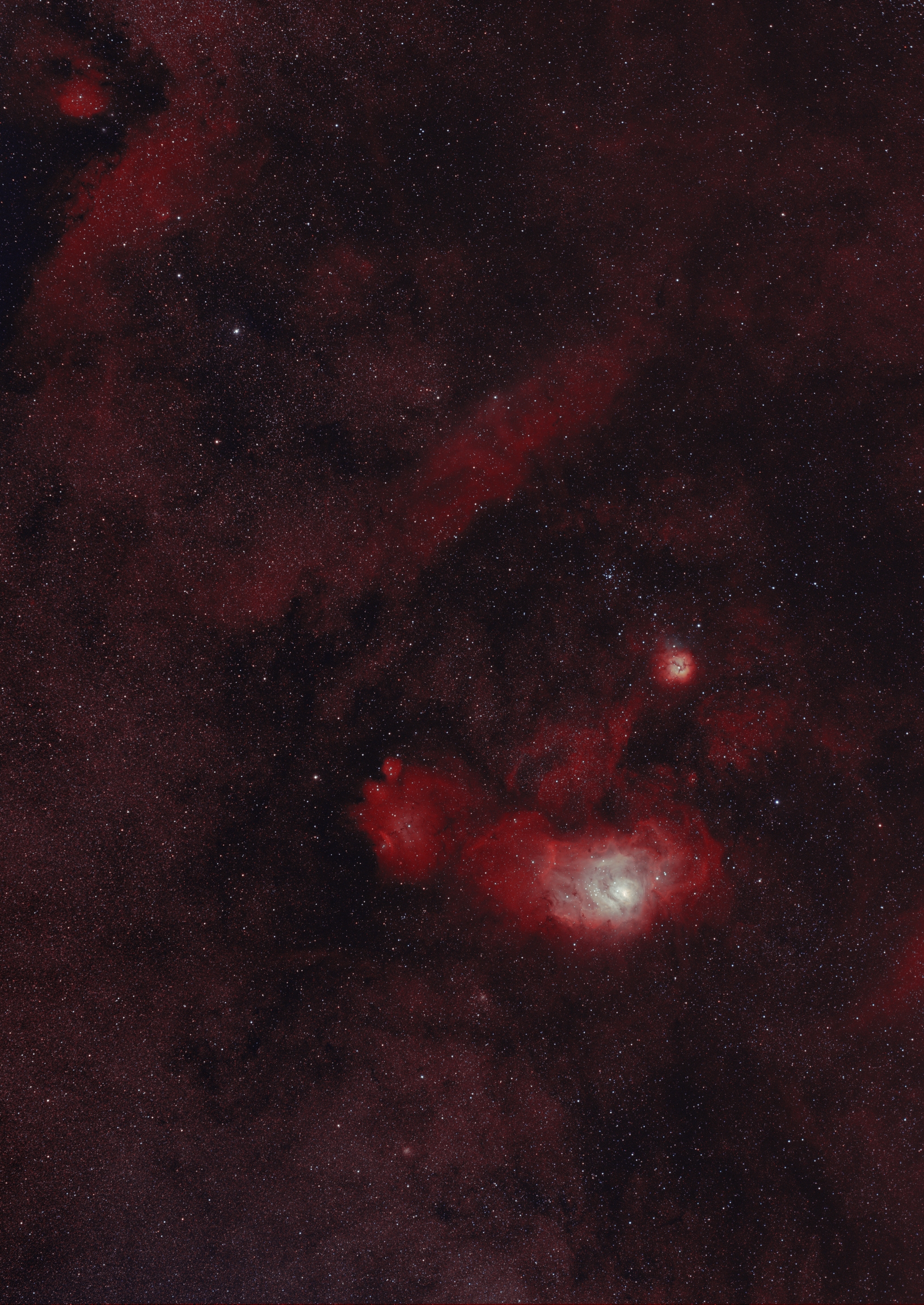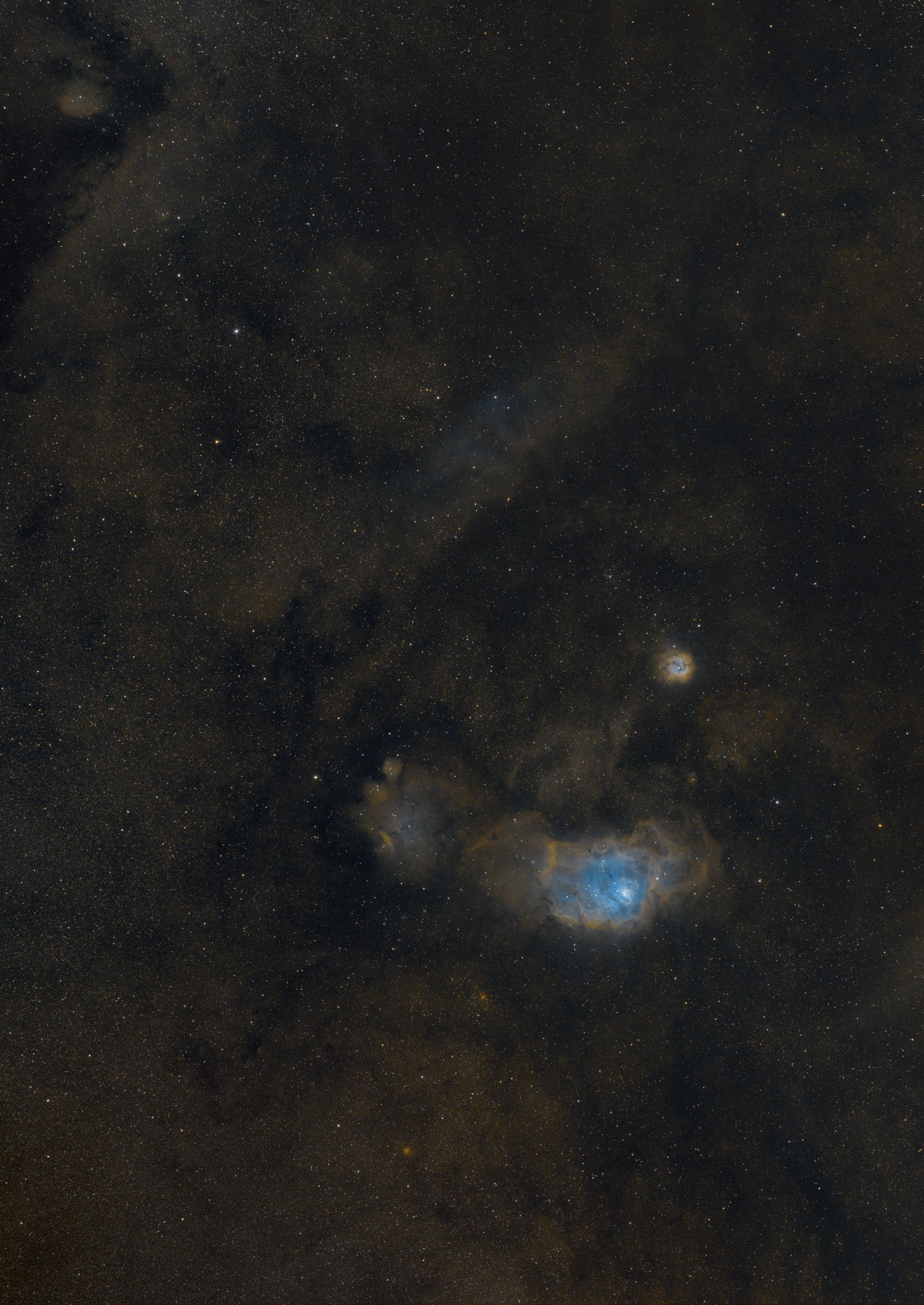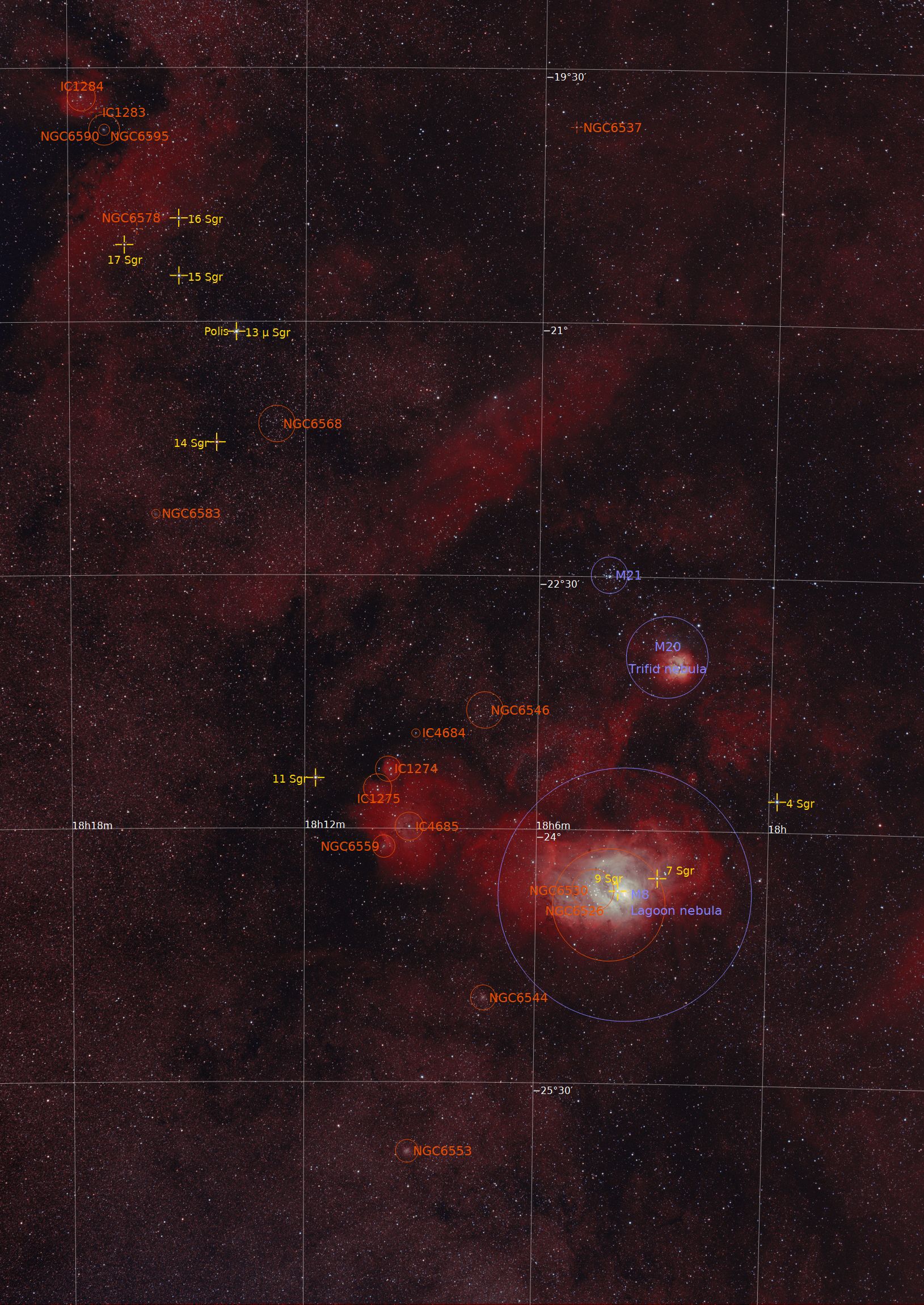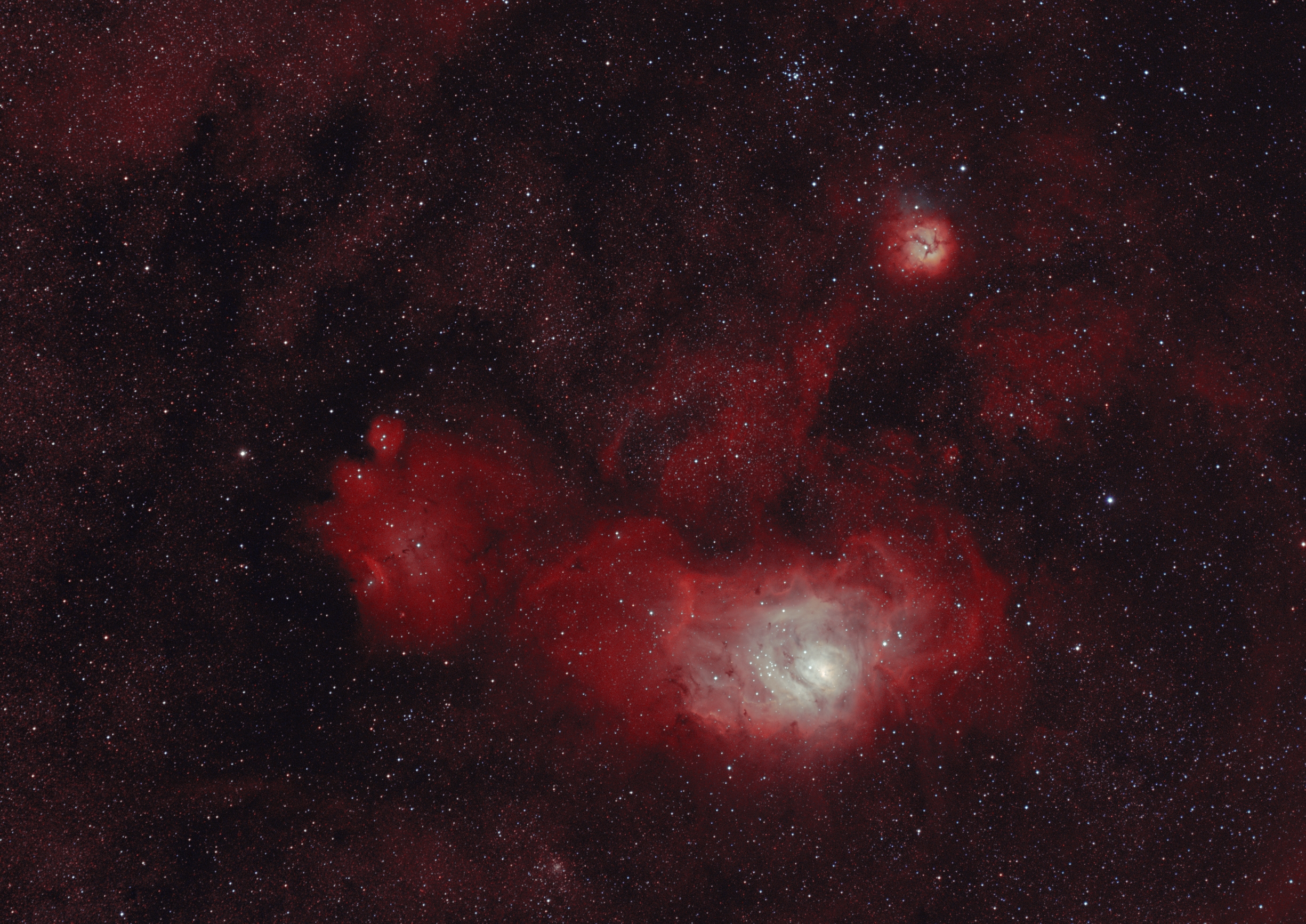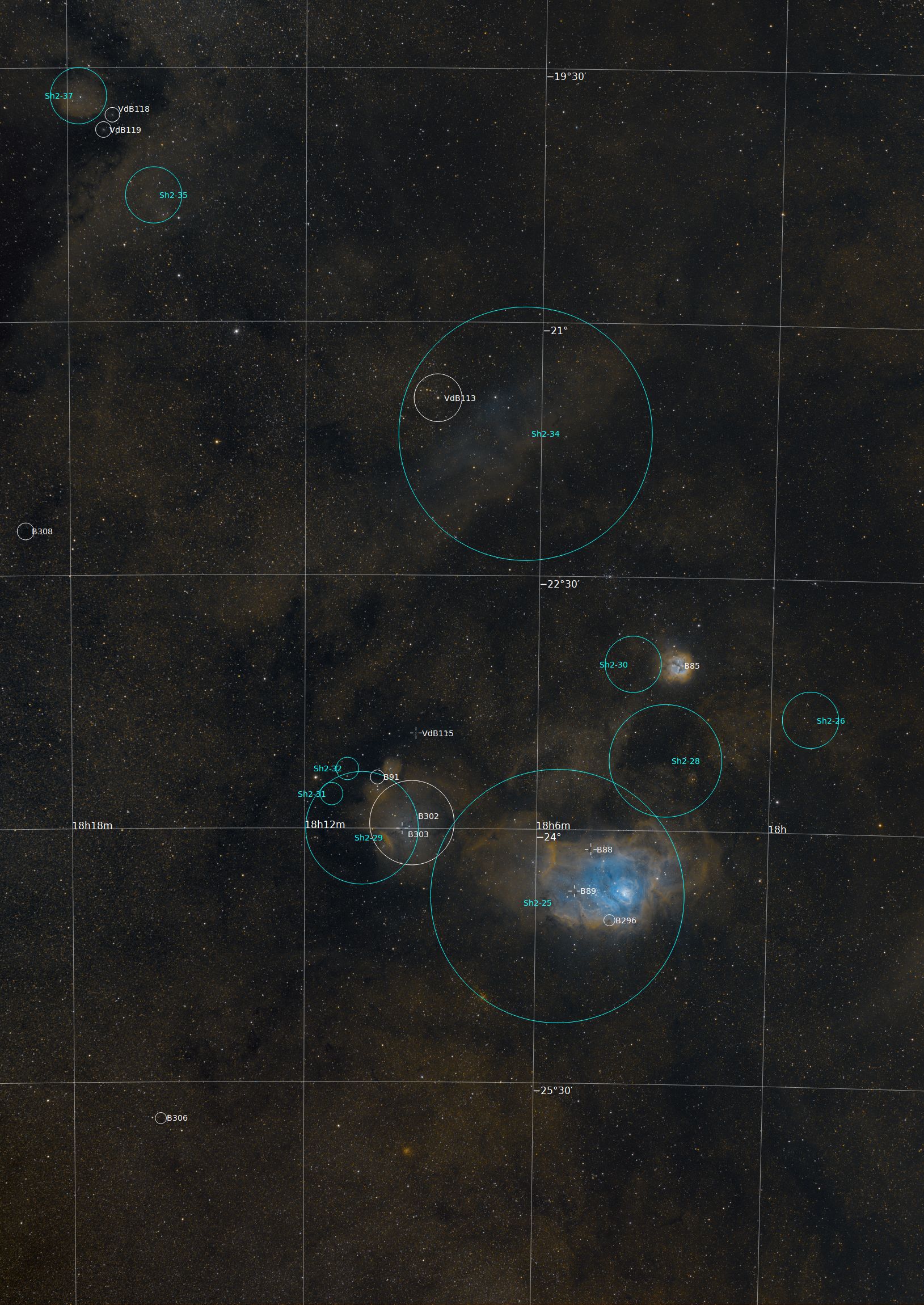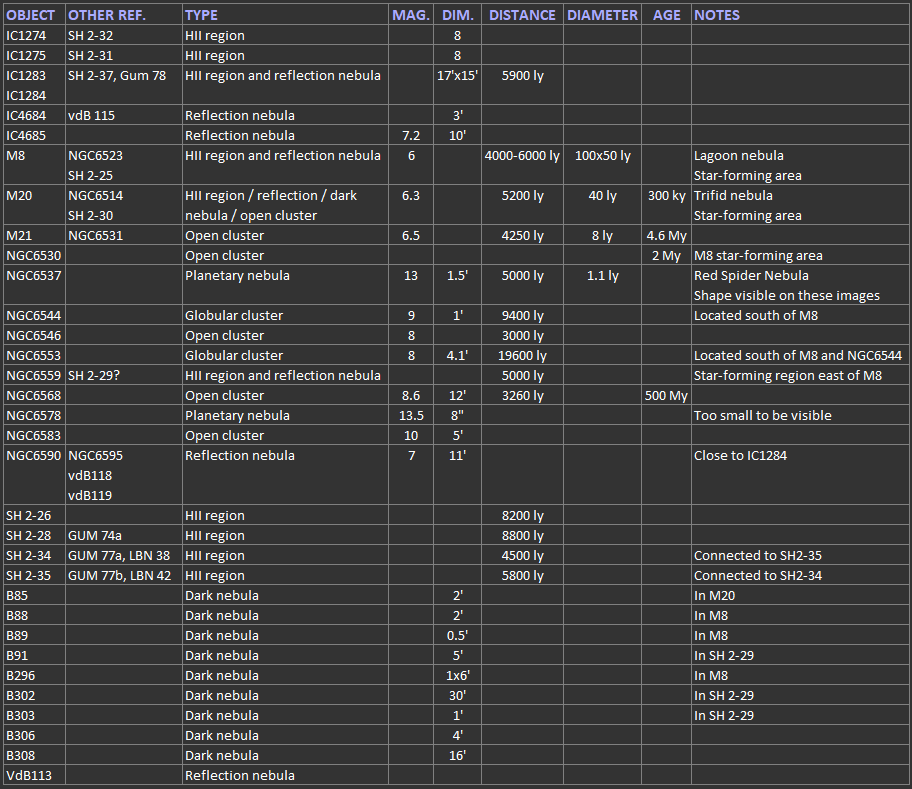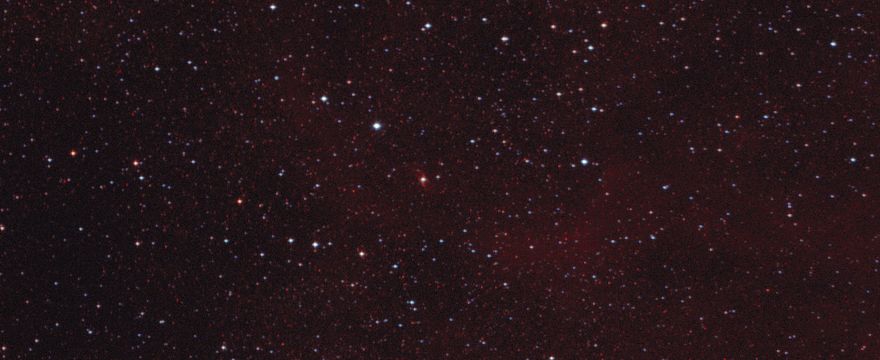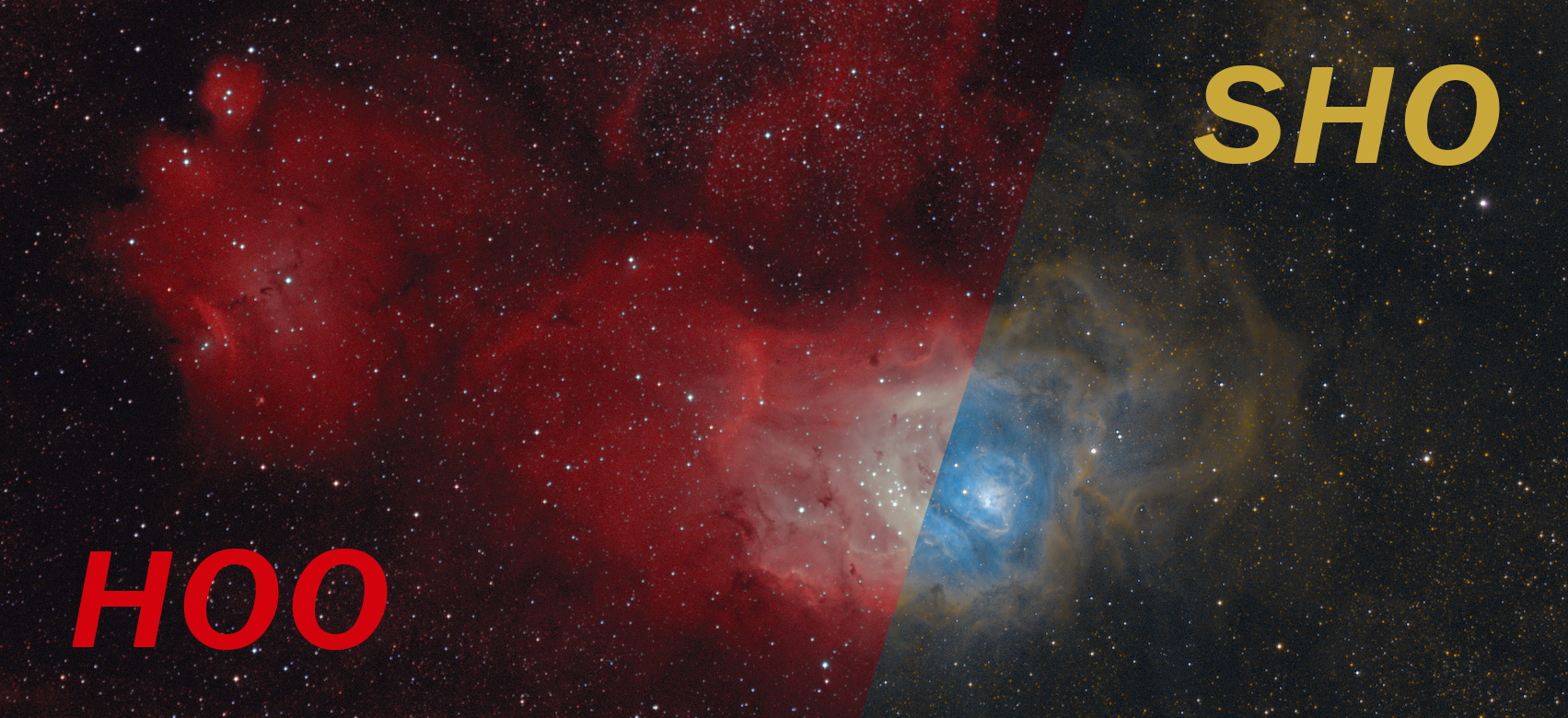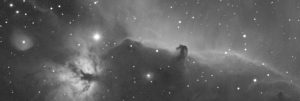2h30 exposure (Ha/OIII/SII):3x10x300s)
Acquired on 3 nights of 2019 (08/25, 09/04 and 09/12)
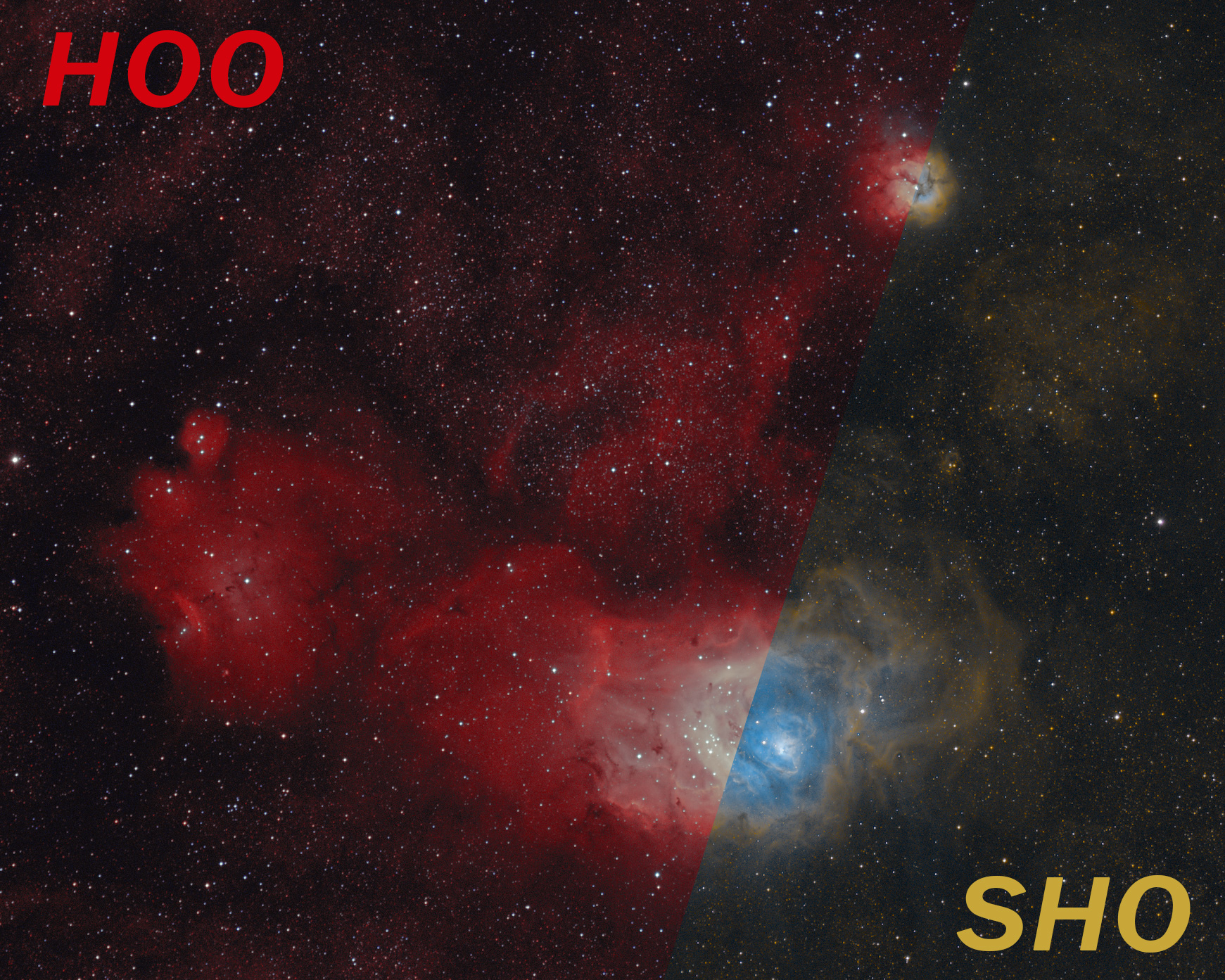
Setup: Samyang 135mm F/2, AZ-EQ6, QHY163m gain=100, QHYCFW2-M, AstroLink 4 mini, QHY5L2M. Software: APT, Stellarium scope, EQ MOD, PHD2
Summer gives the opportunity to capture wide nebula in narrowband. The result is generally colorful but can also led to excess. Let me know what you prefer with these M8 (Lagoon) and M20 (Trifid) nebulas! HOO or SHO?
Location
The field of this photo lies in the Saggitarius constellation in direction of the Milky Way center. All this region is crowdy of stars and contains many interresting nebulas, open clusters and also globular clusters. Among them, Lagoon and Trifid nebulas are probably the most easiest to observe. Despite the low declinaison of the field (-19° to -26°), they are enough bright for a capture in narrowband, even from my observatory located at 45° N latitude .
HOO full field
This HOO images is a combination of shoots in Ha and OIII bands. Red channel embeds Ha whereas green and blue channels include both OIII. Preprocessing and HOO combination is made under Pixinsight and the final processing is executed under Photoshop.
SHO full field
This second image is the SHO version. This is a combination of shoots in Ha, OIII and SII bands. Red channel embeds SII, green channel includes Ha and blue channel contains OIII. Preprocessing and SHO combination is made under Pixinsight and the final processing is executed under Photoshop.
Deep sky objects
The HOO picture below contains annotations of Messier’s, NGC and IC objects:
Among the objects of this field, the Lagoon Nebula – M8 – is the brightest one and is naked eye visible in a good sky (Mag 6). Wikipedia mentions a distance from us between 4000 and 6000 light-years (ly) and a size of 100×50 ly. M8 is an reflection nebula and HII region (referenced as SH2-25) in which star formation is taking place. According to messier-objects.com, NGC6530 is the visible result of this recent star formation with an age of 2 million years only. M8 contains also several dark nebulas referenced in the Barnard’s catalog (B88, B89 and B296) which are dark clouds of dust contributing also to star formation.
On the north of M8 lies M20, the Trifid nebula. M20 is an HII region like M8, but also a reflection nebula, a dark nebula (B85) and an open star cluster! M20 has a magnitude of 6.3 and is distant from us of about 5200 ly for a diameter of 40 ly. This is a very young object aged of 300 000 years. And like M8, this is a star-forming region.
Just nearby, M21 is an open cluster of magnitude of 6.5. It is located arround 4250 ly from us for a radius of 8 ly. M21 is relatively young with 4.6 million years compared to the 4.5 billion years of our sun.
The field contains many others objects of interest. The SHO version below shows this with annotations from the catalogs of Sharpless (HII regions), Barnard (dark nebulas) and Van Den Bergh (reflection nebulas). For the story, some Sharpless object annotations are shifted left from their real positions (SH2-29, 31, 32, 28, 26 and 30). A location error in the catalog itself is the cause of this (more info here)!
For reference, the table below lists all the objects of the field completed with info gathered on the web.
Conclusion
To finish with this post, it is worth to mention that most objects of the field are small or very small in regards the 135mm of the Samyang. So I would say that in term of composition, this is not an outstanding picture. Nevertheless the wide field allows to identify plenty of objects, see their potential, and eventually list them as targets to do with a longer focal length in case of interest. In this mindset, SH 2-29 is already on my list for the variety of nature of the object. Same for the surprising Red spyder nebula NGC6537 clearly seen on this picture (see crop below). And lastly, taking some time to to identify unknown objects is always interesting and source of learning…
For the question if HOO or SHO is the most suited representation for this field, I would say “joker”. A standard LRGB or eventually a Ha-LRGB would have been probably more realistic! But my primary goal for the nigths I shooted this field was to capture NGC7000 once the meridian reached. So I had a bit of time to kill before :-). But if you have an opinion about HOO or SHO for this field, or a preference, please write me a message below!
Clear sky!

